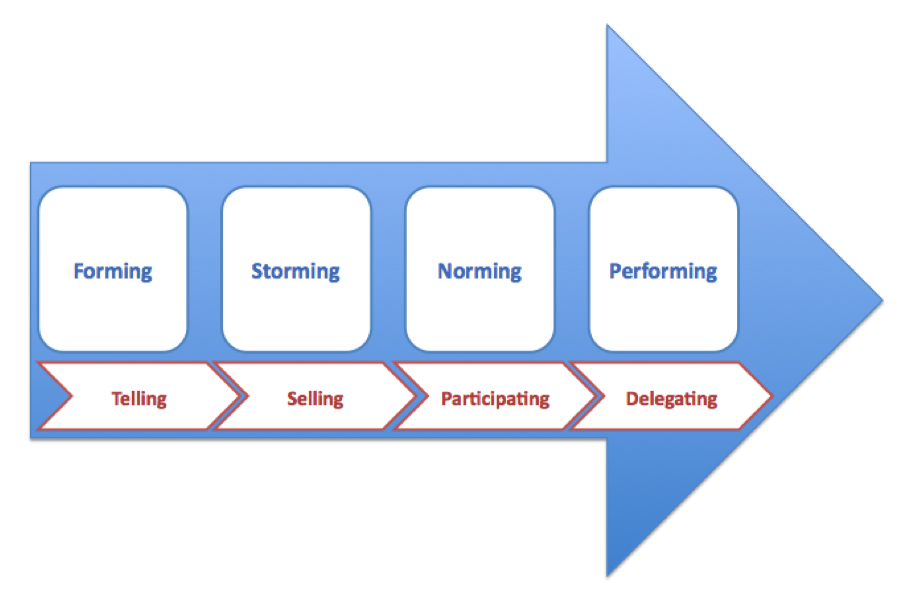I don’t believe in self-organized teams…
Imagine my surprise when a candidate for an agile organizational coach role within our organization shared with me his perspective on this topic.
“Can you share with me your reasoning?”, I asked him intrigued.
The candidate went on to explain that people need direction and that people cannot self-organized without clear objectives and direction.
Indeed, I thought to myself. Who said people and teams shouldn’t be given clear objectives. On the contrary, in my opinion, clear goals are necessary for teams to organize otherwise you end up with a bunch of people who will try to find a reason, a purpose why they are all together – and their self-created goal may very well be different from what you had in mind in the first place.
Where I have a problem is that people associate self-organized teams with “abandoned teams” meaning you simply let the team figure it out – whatever “it” is.
In order to reach the level of autonomy they need to demonstrate extra-ordinary performance, teams need to reach the right level of maturity. Consequently, the manager’s leadership style is critical to achieve that objective. Within Pyxis, we often rely on the combination of the situational leadership and the group development stages to determine the proper level of involvement from the manager.
(Tuckman’s stages of group development, Situational leadership theory)
One of the way to achieve the right level of maturity is for agile managers to determine WHAT must be accomplished and let the team determine HOW it will be done – I already shared my opinion on this topic. Granted, things are more complex that I make them sound in this post but self-organization is indeed possible when the right environment is created for the team – including clear objectives – and it is then given the latitude to operate and determine how best to achieve the given goal.
If only managers would be willing to let go some of their (need to) control and trust the teams, a higher level of performance can be attained.
As you may have guessed, the candidate wasn’t called back for a second interview…








Self-organization will always occur in a group. It is just that without goals and direction your group may decide to self-organize themselves to the nearest pub or an another endeavor not useful to your organization. Likewise, if goals are unclear there is no purpose for the group and no reason for people to work together, and your group might never become a team.
Unfortunately the belief persists that leadership is somehow opposed to agile. On the contrary: agile begins with leadership.
Are you familiar with the mission-tactics or auftragstaktik doctrine (http://en.wikipedia.org/wiki/Mission-type_tactics) used by some armed forces? In mission-tactics the commander sets goals in an overall context and the performing unit (squad, regiment, army) is free to figure out how to best reach said goals. Sound familiar?
Exactly! A common goal is always required for a self-organized group to become a team. There are many ways to create a team but I believe the most efficient, powerful and resilient way is through self-organization.
Sounds like you and your candidate may have been closer to the same thought than you realize. You state “self-organization is indeed possible when the right environment is created for the team – including clear objectives”. So there is a sense of delivering the high level objective to the self-organizing team at the beginning of the project/assignment. The basis for your candidate’s position was “people cannot self-organized without clear objectives”.
I like team members that can form an opinion or view on a topic and support it with well thought-out reasoning. I may not always agree with them (as in your case), but I do appreciate thinkers.
This is a great blog post on an important topic. I agree with you that to perform optimally we need to get to the point where we can state the objectives to a team and then let them determine how to get there. That comes from a mature relationship built on trust.
Indeed. In this specific interview, the candidate failed to explain his reasoning stating that was he personal belief.
Clear and common objectives are required for success. Isn’t this why we have “product owners” and “project charters” in Scrum?
I was going to write something then I read Bob’s post…he explained it very well!
People naturally gravitate towards managerial hierarchies, this is developed through their capacity, commitment & value, skills. Put a group together and they will as you stated with “… the right level of maturity is for agile managers to determine WHAT must be accomplished and let the team determine HOW it will be done”
Those on the team that have to training, ability and innate skill sets organize the team.
… and to add to your comment – those people who “organize” the team do so based on the credibility earned within the team as opposed to bestowed on them by some higher authority.
What a helpful post! There’s alot others can learn from those experienced in Agile – especially with the rise in need for self-organized project teams – not “just” those anointed by someone from above – with a clearly-set goal of “what”, leaving the team to establish how but also the SOPTs that are initiated by someone who wants to seize an opportunity or solve a problem by recruiting the right members needed for success (and no extras) and who share a sweet spot of mutual benefit. Together they agree on the top, actionable goal, their rules of engagement, timetable and tasks (open to rapid change as events unfold)……
Those SOPTs are popping up already – especially among those 30 and younger who grew up studying, playing and co-creating in groups.
Companies are beginning to see the need/value of establishing a top goal and guidelines + rewards for anyone inside to start a SOPT. Cisco’s iPrize, using Spigit and other tools to tap the wisdom of the crowd – and reward the teams with the best ideas, is one example. I started a list of collab-related books and would love to see your recs added Martin
http://listiki.com/best-list-of-collaborationrelated-sites-and-books/kareanderson
Thank you for your wonderful comment Kare. Most organizations haven’t (yet) embraced self-organization and as such are missing a opportunity. Self-organized teams are self-motivated and deliver better results. While many wonder how to improve performance, those who have given the go-ahead to self-organization have already taken a step ahead…
hi,
Nice article. I agree in every respect regarding self-organising teams, not just with respect to Agile but in other project models too. However the Agile Manager still needs to indicate the WHAT and HOW. I think this often a real problem that the WHAT and HOW are often ill defined (not just in Agile) and because things are moving at a high tempo in Agile I am sometimes concerned that you end up running very fast but in the wrong direction.